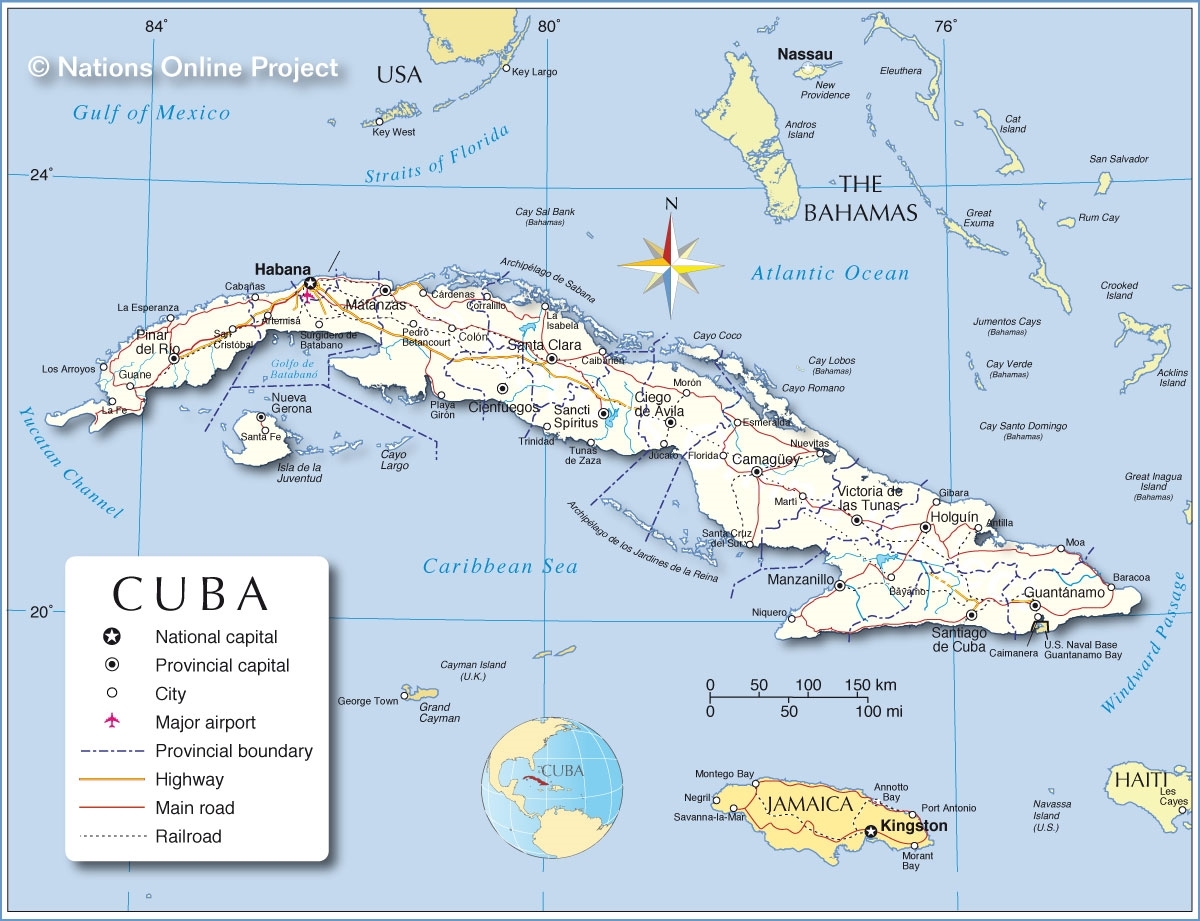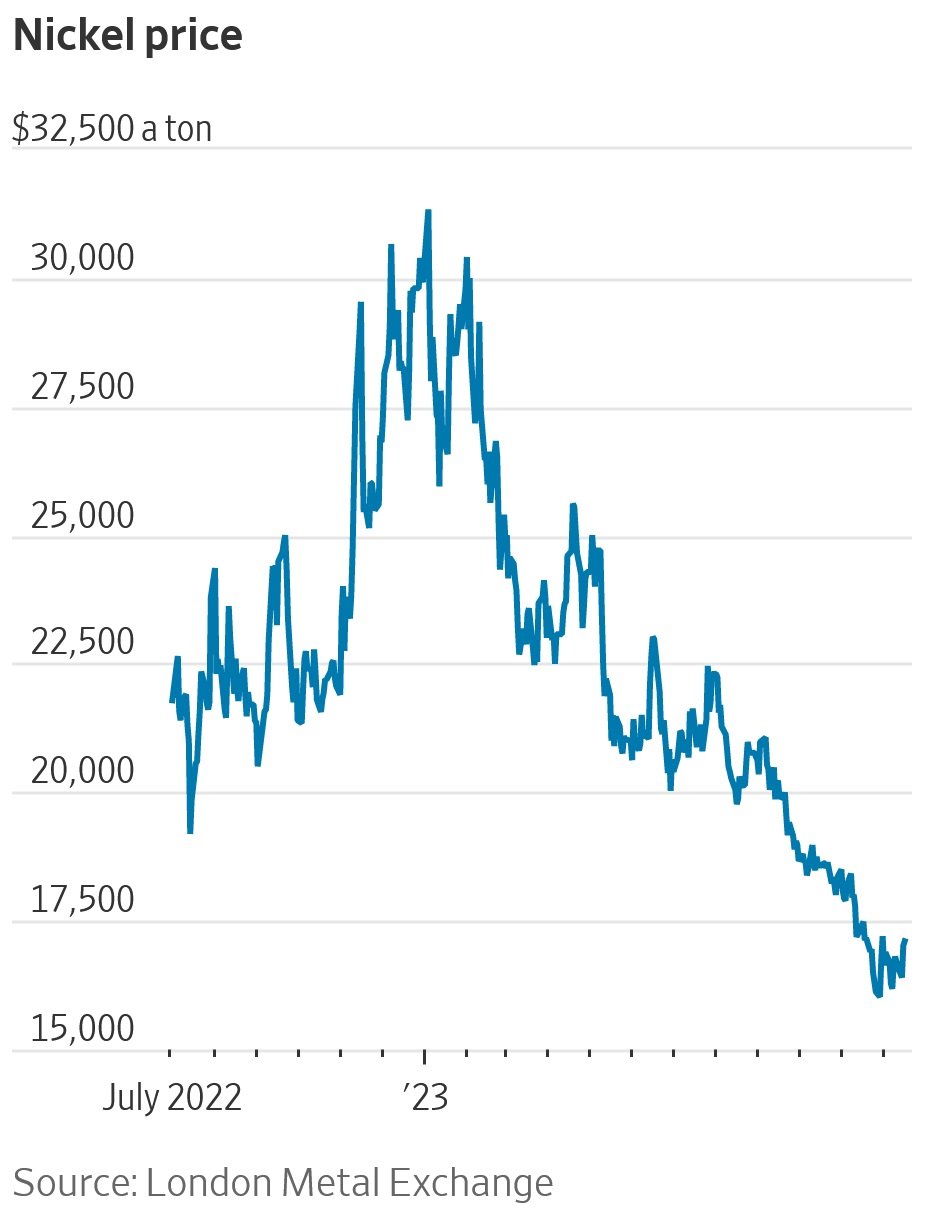Government Of Cuba Revenues, Shareholders In Canada's Sherritt International Corporation Will Suffer From Low Nickel, Cobalt, Lithium Prices Expected In 2024. Cuba Consistently Owes Sherritt Money.
/The Wall Street Journal
New York, New York
29 December 2023
Sustainable Business
Low Battery Metal Prices Set to Persist in 2024, Adding Friction to Energy Transition Oversupply and weak Chinese demand are likely to peg back prices for another year
By Yusuf Khan
Prices for metals used in batteries swooned in 2023, as rising supply and weak demand drove lithium to its cheapest level in two years, cobalt to its lowest point in four and nickel to its pandemic-era nadir. Next year looks likely to bring more of the same.
Lower battery metal prices have made electric vehicles and electrical grid storage cheaper in the near term, but persistently low prices could delay the investment required to ramp up supply of these key energy-transition materials, ultimately making the shift to a green economy slower and more expensive.
What happened?
Mining companies and battery investors had bet on EV sales growing faster than projected in 2023, while analysts had expected a rebound in the purchase of battery metals for EVs in the year as China came out of Covid-19 induced lockdowns. But slow economic growth in China and globally, combined with rising interest rates, put a damper on both.
Global EV sales in 2023 are now expected to reach 14 million, with about 63% in China, according to Bloomberg NEF, an energy-focused research service. “Expectations across the industry may have been too high,” Bloomberg NEF said.
More than 20 lithium mines opened in 2023, according to commodity data provider Fastmarkets. Miners have also been expanding production with an eye on the long term because new mines on average take 10 to 15 years to come online. With supply increasing and demand falling short of expectations, prices have fallen. The price of lithium carbonate—a raw material in batteries—fell 70% this year, Benchmark Mineral Intelligence data shows. Prices for cobalt are down 25%, according to the research firm and price provider, while nickel prices on the London Metal Exchange are down 45%.
“Pre-Covid there were supply concerns,” said Kwasi Ampofo, head of metals and mining at Bloomberg NEF. Producers in China and Australia ramped up their supplies as economies reopened, but demand hasn’t kept up, he said. “We did not come out of Covid with a bang as expected,” Ampofo said.
What’s in the cards for 2024?
Supply of all three battery metals is expected to outpace demand in the year ahead. “The outlook is quite bearish,” Ampofo said. Lithium prices are likely nearing the bottom because producers are now selling close to or below their cost of production, according to Jordan Roberts, battery raw materials analyst at Fastmarkets. “Producers [will] consider further production cuts to balance the market and stem further losses,” he said.
Roberts forecasts a 30% jump in lithium supply in 2024, but lithium-demand expectations are mixed. He projects a 30% increase in lithium demand for next year, which could help lift prices, but “Chinese market participants expect downstream demand to remain weak, with demand only expected to increase 10-15% year-on-year,” Roberts said. In the latter case, the outcome would be a considerable surplus in the market, he said. Benchmark Mineral Intelligence projects a 30,000 metric ton surplus in the global lithium market for next year.
Cobalt prices look likely to remain under pressure too. Jack Bedder, founder and director of critical-minerals consulting firm Project Blue, said the cobalt market is currently very oversupplied due to sluggish demand and high inventories. “All of this is bad news for cobalt prices,” Bedder said, adding that he expects more of the same in 2024 as producers run down stocks. Benchmark forecasts worldwide supply of cobalt to outstrip demand by 20,000 tons in 2024. And nickel is no different. “There’s not much positive movement and we’re not expecting this oversupply to change,” Benchmark analyst Spencer Ingall said. A number of producers in Indonesia have halted production on the low prices, he said. The global surplus of nickel is projected to far exceed that of lithium and cobalt next year, according to Benchmark, which puts it at 200,000 tons.
Why does this matter?
Demand is expected to soar for both electric vehicles and the minerals that go into them. Bloomberg NEF is forecasting global battery demand of 3.6 terawatt hours in 2030, up from 0.95 terawatt hours in 2023. The market for lithium-ion batteries alone is expected to surpass $300 billion by 2031, more than double what it is today.
But the supply of battery metals is determined largely by market conditions, including prices high enough to motivate miners to dig and explore. Persistently low prices for cobalt, lithium and nickel could delay the development of needed new sources, creating shortfalls and driving up battery prices in the longer term, thereby slowing decarbonization efforts.
While lower prices aren’t good news for miners, they can help cell makers cut the cost of a battery pack, making it cheaper to buy an electric car. Battery pack prices are forecast to fall further in 2024, to $133 per kilowatt-hour, after sliding to $139 per kWh this year from $161 per kWh in 2022, according to Bloomberg NEF. Prices are sharply lower than the $780 per kWh in 2013, but some of that cost reduction has come from scaling up production and reducing the amount of battery materials used, rather than a drop in commodity prices.
“The long-term [demand] prospect still remains…[so] supply is going to have to go faster than in the last few years if we are to keep up,” Ampofo said. “There has to be a sweet spot for miners and battery manufacturers.”
LINK: Toronto, Canada-based Sherritt International Corportaion Internet Site
“Sherritt is a world leader in the mining and refining of nickel and cobalt -- metals essential for the growing adoption of electric vehicles. Its Technologies Group creates innovative, proprietary solutions for oil and mining companies around the world to improve environmental performance and increase economic value. Sherritt is also the largest independent energy producer in Cuba.”




